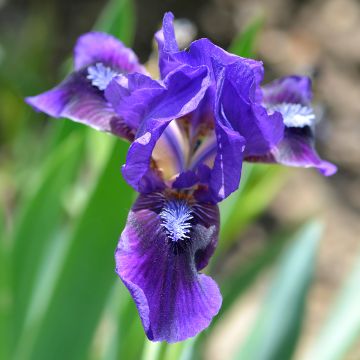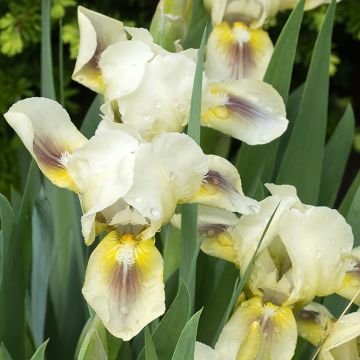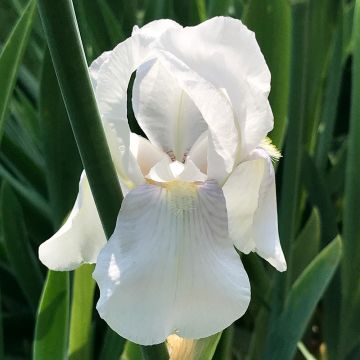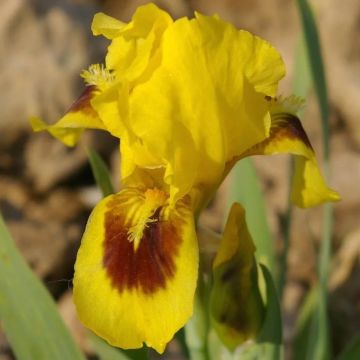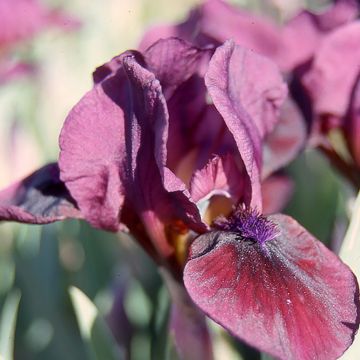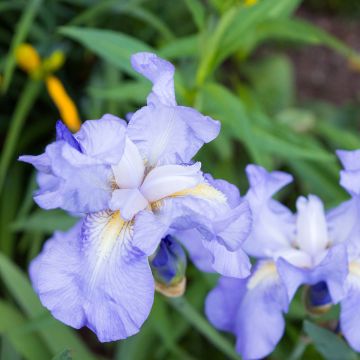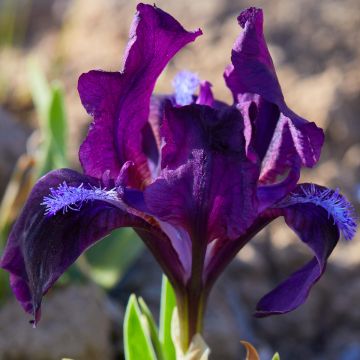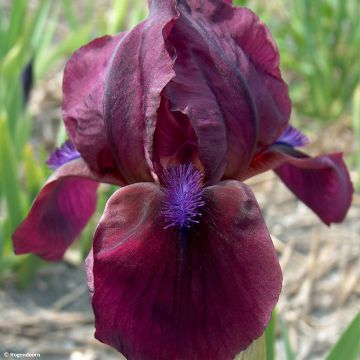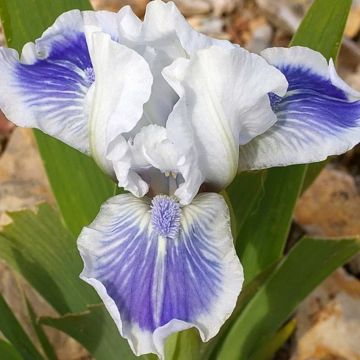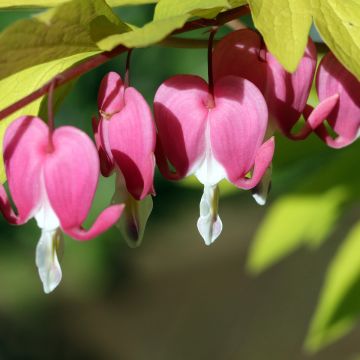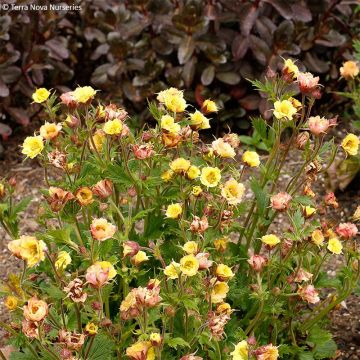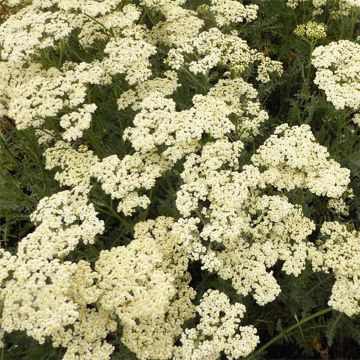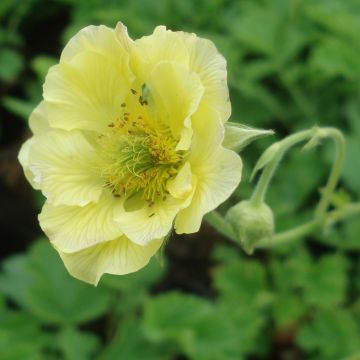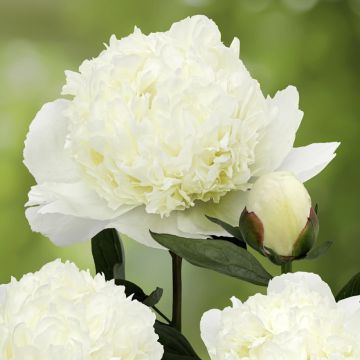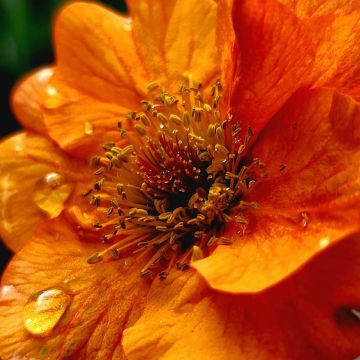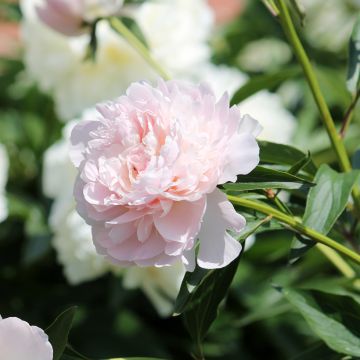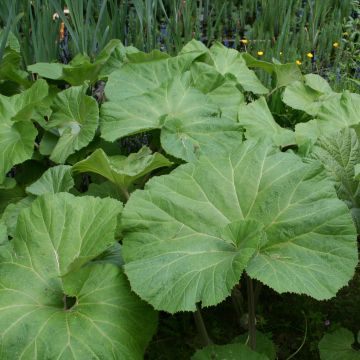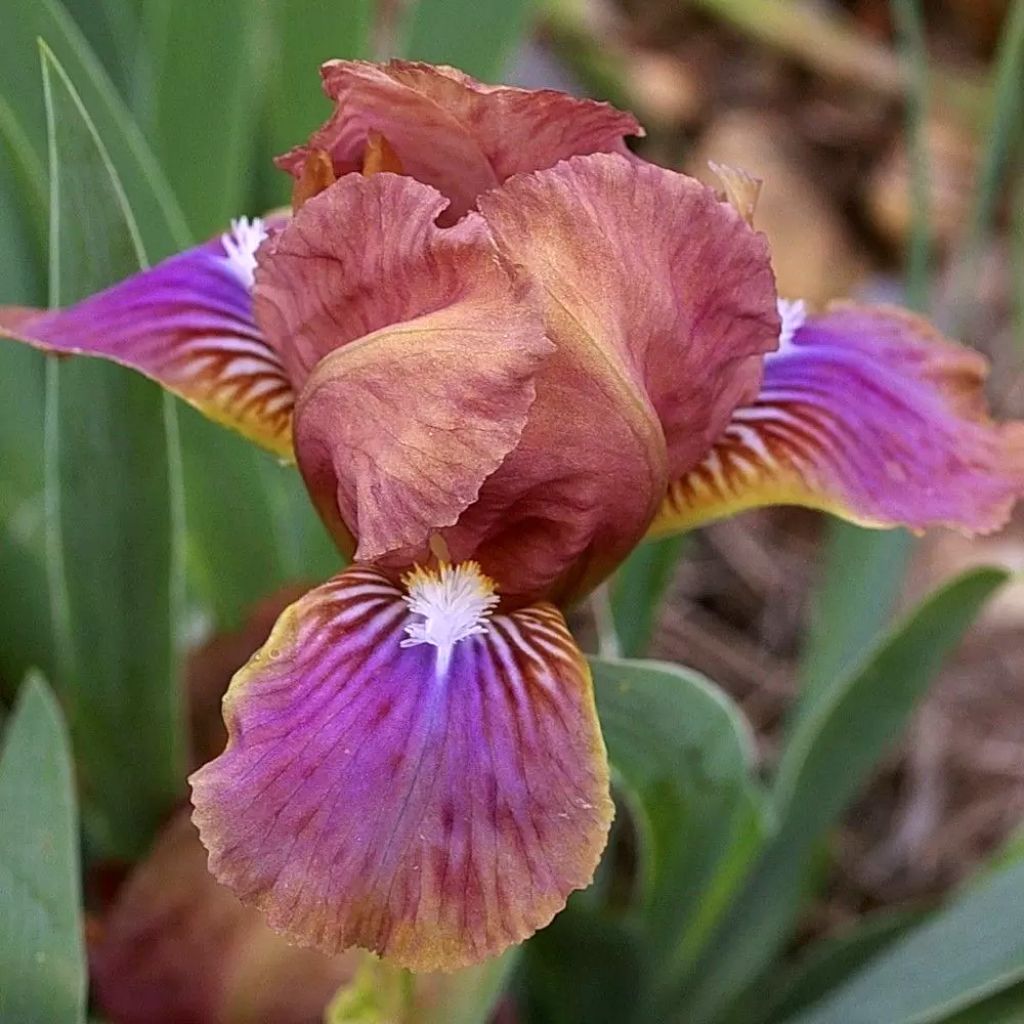

Iris Wee Harry - Dwarf iris
Iris Wee Harry - Dwarf iris
Iris pumila Wee Harry
Dwarf Iris
This item cannot be shipped to the selected country
Delivery charge from €5.90
Delivery charge from €5.90
More information
Schedule delivery date,
and select date in basket
This plant carries a 12 months recovery warranty
More information
We guarantee the quality of our plants for a full growing cycle, and will replace at our expense any plant that fails to recover under normal climatic and planting conditions.
From €5.90 for pickup delivery and €6.90 for home delivery
Express home delivery from €8.90.
From €5.90 for pickup delivery and €6.90 for home delivery
Express home delivery from €8.90.
Does this plant fit my garden?
Set up your Plantfit profile →
Description
The 'Wee Harry' Iris is a very warm-coloured, particularly attractive miniature dwarf iris that blooms in April. Its small flowers display a palette combining coppery pink buff and pinkish purple, illuminated by a small white beard. Planted in small groups, it will have a great effect on a slope, in a sunny rockery or in a planter.
The 'Wee Harry' Iris is classified in the horticultural group of Miniature Dwarf Bearded Iris (MDB). The varieties in this group meet the following criteria: foliage shorter than the flower stem, curved or sickle-shaped, height less than 25 cm and flowers 5 cm to 7.5 cm in diameter. It is a small rhizomatous, deciduous perennial plant, with an upright tufted habit from spring onwards. It belongs to the Iridaceae family. Cultivars of small irises appeared in the 1950s. Originally, the 'lilliput' category referred to the crossbreeding of an Iris pumila and a tall iris. This term now generally refers to the category of Standard Dwarf Bearded Iris (SDB).
The 'Wee Harry' Iris will reach a height of 18 cm when in bloom. It will spread indefinitely over time, with the rhizomes in the centre becoming bare in favour of the outer rhizomes. This small plant has a low and dense tufted habit. The foliage is deciduous in winter and consists of elongated, glaucous green leaves with parallel veins. The flowering is early: in March, floral stems appear that will give flowers in April, in the middle of the season for dwarf irises, blooming from top to bottom. The colour of this plant is described precisely as follows: "the petals and style are buff; the sepals are identical, with veins of reddish purple at the level of the beards advancing to merge into a pink wash over most of the centre of the petal; white beards."
Dwarf irises are charming for adding colour and structure to the garden, especially in spring. They require a sunny location and well-drained soil to thrive. Avoid areas where water stagnates, as their rhizomes do not appreciate excessive moisture.
These little wonders are perfect for borders or the foreground of flower beds. Dwarf irises also blend well in rockeries or gravel gardens, thanks to their drought tolerance.
Dwarf irises go well with other plants that share their need for sun and well-drained soil. Small perennial plants like rock cress, creeping phlox, and sedums are good companions, as they complement irises in terms of texture and colour while covering the ground. Spring bulbs such as botanical tulips, spring crocuses, and grape hyacinths add animation. Small grasses like blue fescue can offer a contrast in texture and structure the space around the irises.
Remember to divide dwarf irises every 4-5 years to maintain their vigour and multiply them, allowing you to enjoy their beauty for many years.
Report an error about the product description
Flowering
Foliage
Plant habit
Botanical data
Iris
pumila
Wee Harry
Iridaceae
Dwarf Iris
Cultivar or hybrid
Other Dwarf and mini Bearded Iris
Planting and care
Do you have a sunny, warm location, rather dry in summer?
This is the ideal location for planting irises! In the shade, they grow but do not bloom. They are hardy and do not need winter protection. Well-drained soil is perfect, even if it is rather dry and chalky. Soil that is too wet promotes rhizome rot. Plant from July to September. This allows the rhizomes enough time to grow and develop new roots before winter. They should be planted as soon as they are purchased for best results. Plan to divide irises every 4 years or so to give them fresh soil. They have vigorous growth and require space to develop and flower well. Planted with spacing appropriate to the size and vigour of the variety: about 34-50 cm for tall ones (5 to 10 plants per square metre). In a monochrome planting, the rhizomes are planted in a staggered pattern. To create a mix of colours, plant them in groups of several plants of the same variety. Always consider the direction of rhizome growth by arranging them in a star shape, with buds and leaves facing outward, and spacing them well away from other varieties so they have room to grow.
Planting
Dig a hole that is wide and deep enough. Make a conical mound of soil in the hole, on which the rhizome and spreading roots are placed. Cover the roots. It is important for the rhizome to be left just above the surface of the soil. It should not be planted in a dip (risk of rot), so anticipate that the soil will settle and the iris will sink. In clay or moist soil, the rhizome should even be raised on a slight mound of a few centimetres. To make the soil cling to the roots, lightly firm the soil and water abundantly immediately after planting. Water 2-3 times if necessary until the plant resumes growth.
Maintenance:
Keep the soil free of weeds by shallow hoeing, taking care not to damage the rhizomes or roots. Weeds shade the irises, retain moisture (causing rot), and attract slugs. Similarly, remove dry leaves. If they are diseased (reddish-bordered spots of heterosporiosis), burn them. Remove faded flowers.
Planting period
Intended location
Care
This item has not been reviewed yet - be the first to leave a review about it.
Spring flowering perennials
Haven't found what you were looking for?
Hardiness is the lowest winter temperature a plant can endure without suffering serious damage or even dying. However, hardiness is affected by location (a sheltered area, such as a patio), protection (winter cover) and soil type (hardiness is improved by well-drained soil).

Photo Sharing Terms & Conditions
In order to encourage gardeners to interact and share their experiences, Promesse de fleurs offers various media enabling content to be uploaded onto its Site - in particular via the ‘Photo sharing’ module.
The User agrees to refrain from:
- Posting any content that is illegal, prejudicial, insulting, racist, inciteful to hatred, revisionist, contrary to public decency, that infringes on privacy or on the privacy rights of third parties, in particular the publicity rights of persons and goods, intellectual property rights, or the right to privacy.
- Submitting content on behalf of a third party;
- Impersonate the identity of a third party and/or publish any personal information about a third party;
In general, the User undertakes to refrain from any unethical behaviour.
All Content (in particular text, comments, files, images, photos, videos, creative works, etc.), which may be subject to property or intellectual property rights, image or other private rights, shall remain the property of the User, subject to the limited rights granted by the terms of the licence granted by Promesse de fleurs as stated below. Users are at liberty to publish or not to publish such Content on the Site, notably via the ‘Photo Sharing’ facility, and accept that this Content shall be made public and freely accessible, notably on the Internet.
Users further acknowledge, undertake to have ,and guarantee that they hold all necessary rights and permissions to publish such material on the Site, in particular with regard to the legislation in force pertaining to any privacy, property, intellectual property, image, or contractual rights, or rights of any other nature. By publishing such Content on the Site, Users acknowledge accepting full liability as publishers of the Content within the meaning of the law, and grant Promesse de fleurs, free of charge, an inclusive, worldwide licence for the said Content for the entire duration of its publication, including all reproduction, representation, up/downloading, displaying, performing, transmission, and storage rights.
Users also grant permission for their name to be linked to the Content and accept that this link may not always be made available.
By engaging in posting material, Users consent to their Content becoming automatically accessible on the Internet, in particular on other sites and/or blogs and/or web pages of the Promesse de fleurs site, including in particular social pages and the Promesse de fleurs catalogue.
Users may secure the removal of entrusted content free of charge by issuing a simple request via our contact form.
The flowering period indicated on our website applies to countries and regions located in USDA zone 8 (France, the United Kingdom, Ireland, the Netherlands, etc.)
It will vary according to where you live:
- In zones 9 to 10 (Italy, Spain, Greece, etc.), flowering will occur about 2 to 4 weeks earlier.
- In zones 6 to 7 (Germany, Poland, Slovenia, and lower mountainous regions), flowering will be delayed by 2 to 3 weeks.
- In zone 5 (Central Europe, Scandinavia), blooming will be delayed by 3 to 5 weeks.
In temperate climates, pruning of spring-flowering shrubs (forsythia, spireas, etc.) should be done just after flowering.
Pruning of summer-flowering shrubs (Indian Lilac, Perovskia, etc.) can be done in winter or spring.
In cold regions as well as with frost-sensitive plants, avoid pruning too early when severe frosts may still occur.
The planting period indicated on our website applies to countries and regions located in USDA zone 8 (France, United Kingdom, Ireland, Netherlands).
It will vary according to where you live:
- In Mediterranean zones (Marseille, Madrid, Milan, etc.), autumn and winter are the best planting periods.
- In continental zones (Strasbourg, Munich, Vienna, etc.), delay planting by 2 to 3 weeks in spring and bring it forward by 2 to 4 weeks in autumn.
- In mountainous regions (the Alps, Pyrenees, Carpathians, etc.), it is best to plant in late spring (May-June) or late summer (August-September).
The harvesting period indicated on our website applies to countries and regions in USDA zone 8 (France, England, Ireland, the Netherlands).
In colder areas (Scandinavia, Poland, Austria...) fruit and vegetable harvests are likely to be delayed by 3-4 weeks.
In warmer areas (Italy, Spain, Greece, etc.), harvesting will probably take place earlier, depending on weather conditions.
The sowing periods indicated on our website apply to countries and regions within USDA Zone 8 (France, UK, Ireland, Netherlands).
In colder areas (Scandinavia, Poland, Austria...), delay any outdoor sowing by 3-4 weeks, or sow under glass.
In warmer climes (Italy, Spain, Greece, etc.), bring outdoor sowing forward by a few weeks.

































